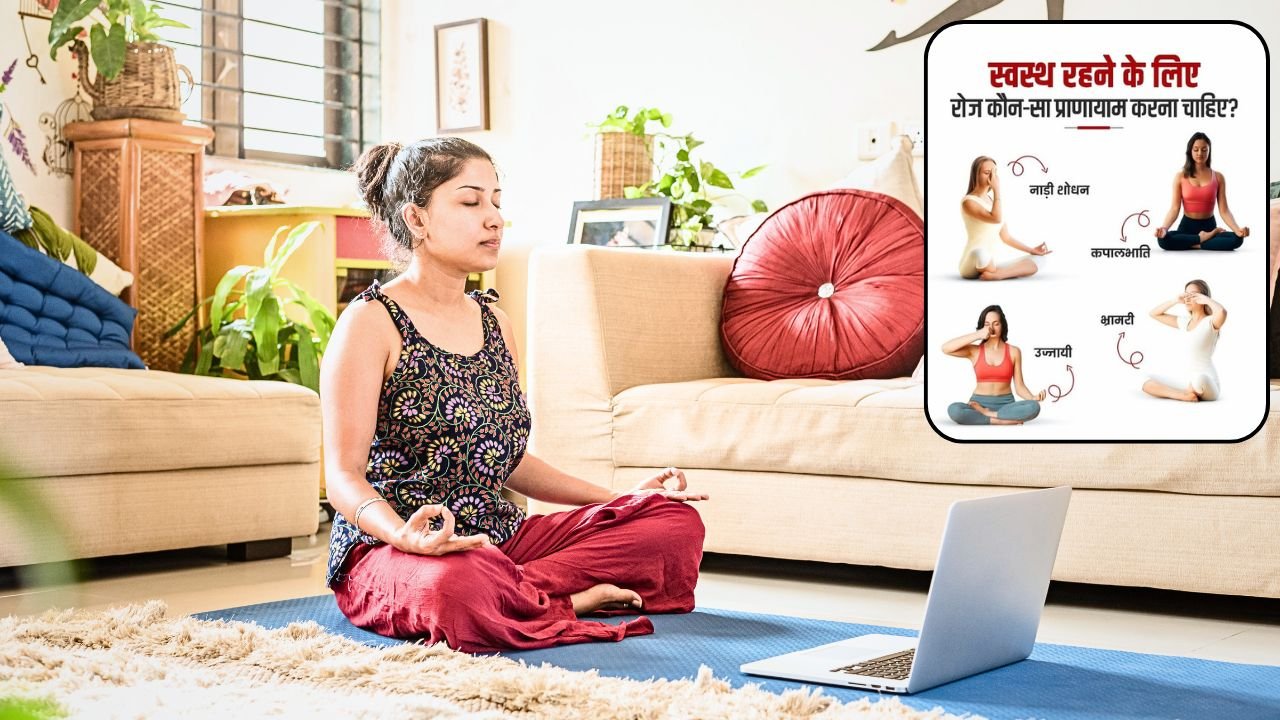In today's fast-paced world, maintaining optimal health goes beyond just diet and exercise. The ancient practice of Pranayama, the yogic science of breath control, offers a powerful pathway to profound physical and mental well-being. At YogIntra, we believe that mastering your breath is the first step towards a healthier, more balanced life. But with so many techniques, which Pranayama should you incorporate into your daily routine? Let's delve into some of the most impactful ones.
The Power of Pranayama: A Foundation for Health
Pranayama, derived from Sanskrit words "Prana" (life force) and "Ayama" (extension or control), is more than just breathing exercises. It's a method to regulate the flow of vital energy (prana) throughout your body, influencing your physical systems, mental state, and emotional balance. Regular practice can lead to improved respiratory function, reduced stress, enhanced concentration, better sleep, and a boosted immune system.
Key Pranayama Techniques for Holistic Health:
At YogIntra, we emphasize practices that are accessible and deeply beneficial. Here are four essential Pranayama techniques to consider:
1. Nadi Shodhana Pranayama (Alternate Nostril Breathing)
Often considered a foundational Pranayama, Nadi Shodhana is a gentle yet incredibly effective technique for purifying the energy channels (nadis) in the body and balancing the left and right hemispheres of the brain.
How to Practice:
-
Sit comfortably with a straight spine.
-
Close your right nostril with your right thumb. Inhale slowly and deeply through your left nostril.
-
Close your left nostril with your ring finger, release your thumb from your right nostril, and exhale slowly through the right nostril.
-
Inhale through your right nostril.
-
Close your right nostril, release your ring finger from your left nostril, and exhale slowly through the left nostril.
-
This completes one round. Continue for 5-10 rounds.
Benefits:
-
Calms the mind and reduces anxiety: By balancing the nervous system, it promotes a sense of tranquility.
-
Improves respiratory function: Enhances lung capacity and oxygen intake.
-
Detoxifies the body: Clears energy channels.
-
Boosts concentration and mental clarity.
-
Supports cardiovascular health: Helps regulate heart rate and blood pressure.
2. Kapalbhati Pranayama (Skull Shining Breath)
Kapalbhati is a dynamic and invigorating breathing technique known for its cleansing and energizing effects.
How to Practice:
-
Sit comfortably with a straight spine.
-
Take a deep inhalation.
-
Exhale forcefully and rapidly through both nostrils, drawing your navel towards your spine. The inhalation should be passive and automatic.
-
Continue these forceful exhalations at a steady pace.
-
Start with 20-30 exhalations and gradually increase as you feel comfortable.
Benefits:
-
Detoxifies the body: Clears respiratory passages and removes toxins.
-
Energizes the body and mind: Increases vital energy (prana) and promotes mental alertness.
-
Strengthens abdominal muscles: Can aid in digestion and metabolism.
-
Improves lung capacity and respiratory health.
-
Reduces stress and mental fatigue.
3. Bhramari Pranayama (Humming Bee Breath)
Bhramari is a soothing and calming Pranayama that involves producing a humming sound, mimicking a bee. It's particularly effective for stress relief and improving sleep quality.
How to Practice:
-
Sit comfortably with a straight spine.
-
Close your eyes and gently close your ears with your thumbs or by placing your index fingers over the tragus (the small flap in front of the ear canal).
-
Inhale deeply through your nose.
-
As you exhale slowly, make a soft, continuous humming sound (like an "Mmmmnnnn") from the back of your throat with your mouth closed.
-
Feel the vibrations throughout your head.
-
Repeat for 5-7 rounds.
Benefits:
-
Calms the nervous system: Relieves stress, anxiety, and frustration.
-
Promotes mental peace and relaxation: Induces a meditative state.
-
Improves sleep quality: Helps with insomnia and restless nights.
-
Soothes the throat and nasal passages.
-
Enhances concentration and memory.
4. Ujjayi Pranayama (Victorious Breath / Ocean Breath)
Ujjayi Pranayama involves a gentle constriction at the back of the throat, creating a soft, oceanic sound during inhalation and exhalation. This technique helps to regulate breath and promote mindfulness.
How to Practice:
-
Sit comfortably with a straight spine.
-
Close your mouth and gently constrict the back of your throat, as if you're whispering "Haaaa" with your mouth closed.
-
Inhale and exhale slowly through your nose, maintaining this gentle constriction, creating a soft, audible sound resembling ocean waves.
-
Ensure your inhalations and exhalations are equal in duration.
Benefits:
-
Calms the mind and reduces anxiety: Activates the parasympathetic nervous system.
-
Enhances focus and concentration: The audible breath acts as a meditative anchor.
-
Regulates body temperature.
-
Improves lung health and oxygen flow.
-
Supports cardiovascular health: Slows heart rate and improves circulation.
Which Pranayama is Right for You?
The "best" Pranayama depends on your individual needs and current health. For beginners, Nadi Shodhana and Ujjayi are excellent starting points due to their calming and balancing effects. If you're looking for an energy boost and detoxification, Kapalbhati is highly effective (but should be practiced on an empty stomach and with caution if you have certain health conditions). For stress relief and better sleep, Bhramari is an ideal choice.
At YogIntra, we encourage you to explore these techniques with awareness and consistency. Even just 10-15 minutes of daily Pranayama practice can significantly impact your overall health and vitality. Remember to listen to your body and consult with a qualified yoga instructor if you have any health concerns or are new to Pranayama. Breathe deeply, live fully!
